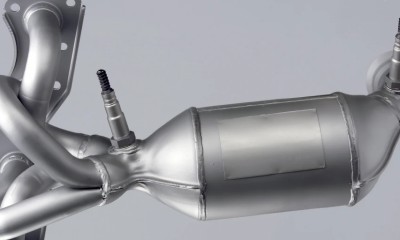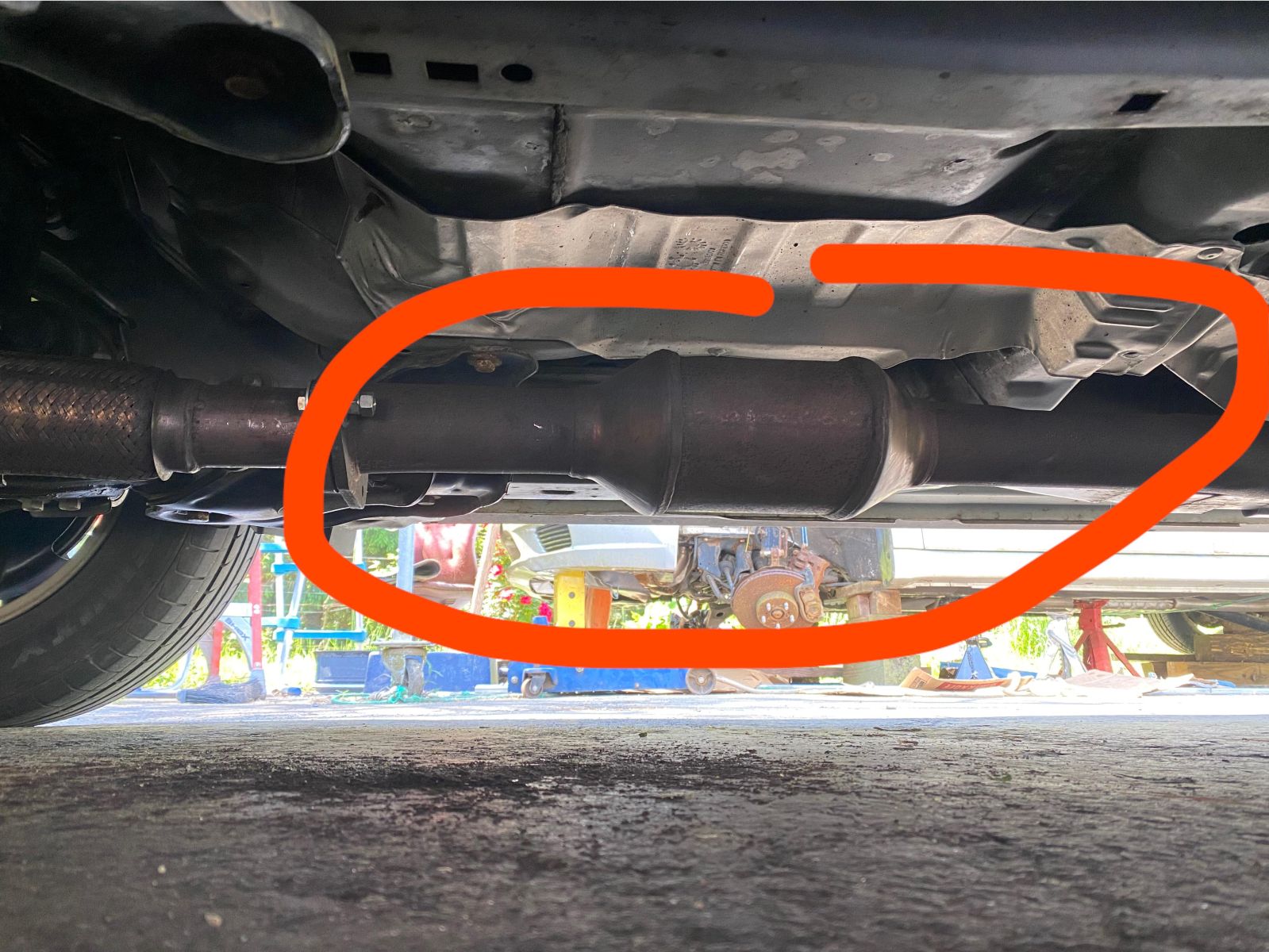P0420 Fault Code Explained | Causes, Fixes & ECU Tuning Solutions

The illumination of a check engine light is a moment that brings a universal sense of dread to any vehicle owner. When you connect an OBD-II scanner and it reveals the generic fault code P0420, you're facing one of the most common yet frequently misunderstood diagnostic trouble codes (DTCs) in modern vehicles. For the professional technician and the serious enthusiast, understanding this code is not just about fixing a light it's about diagnosing the health of the entire engine and emissions system.
Deconstructing the Code: "Catalyst System Efficiency Below Threshold (Bank 1)"
At its core, the P0420 code translates to “Catalyst System Efficiency Below Threshold (Bank 1)”. This means the vehicle's primary computer, the Engine Control Unit (ECU) or Powertrain Control Module (PCM), has determined that the catalytic converter on "Bank 1" of the engine is no longer operating at the efficiency level required by the manufacturer. 
The catalytic converter is a critical component of your exhaust system, designed to convert harmful pollutants such as carbon monoxide (CO), hydrocarbons (HC), and nitrogen oxides (NOx) into less harmful substances like carbon dioxide (CO2) and water. To monitor this process, the ECU relies on data from two oxygen (O2) sensors:
-
Upstream O2 Sensor (Sensor 1): Located before the catalytic converter, this sensor measures the oxygen content in the raw exhaust gas leaving the engine. Its readings fluctuate rapidly as the ECU makes constant adjustments to the air-fuel ratio.
-
Downstream O2 Sensor (Sensor 2): Located after the catalytic converter, this sensor measures the oxygen content of the treated exhaust gases. In a healthy system, the catalytic converter stores and uses oxygen to perform its chemical reactions. As a result, the downstream O2 sensor's signal should be relatively stable and steady compared to the upstream sensor.
The P0420 code is triggered when the ECU observes that the downstream O2 sensor's readings have begun to mimic the rapid fluctuations of the upstream sensor. This indicates that the catalytic converter is not effectively storing oxygen and, therefore, is not cleaning the exhaust gases as it should. For vehicles with a V-engine configuration, a
P0430 code indicates the same issue on Bank 2.
Common Symptoms of a P0420 Code
While the check engine light is the most obvious sign, a P0420 code can be accompanied by several other symptoms that point to an underlying issue:
-
Illuminated Check Engine Light: This is the primary and sometimes only symptom a driver will notice.
-
Reduced Engine Performance: The vehicle may feel sluggish, struggle to accelerate, or feel like it has a lack of power, especially after warming up. In severe cases, the vehicle may not be able to exceed speeds of 30-40 mph.
-
Poor Fuel Economy: An inefficient catalytic converter system can cause the engine to run less efficiently, leading to a noticeable decrease in miles per gallon.
-
"Rotten Egg" or Sulfur Smell: A failing catalytic converter can produce a distinct sulfuric smell from the exhaust pipe as it struggles to process unburned fuel.
-
Failed Emissions Test: This is a guaranteed consequence of an active P0420 code, as the vehicle is actively reporting that its emissions control system is not functioning correctly.
What Causes the P0420 Code? The Root of the Problem
A common mistake in diagnosing a P0420 code is to immediately assume the catalytic converter needs replacement. While a failed converter is often the
result, it is rarely the root cause. Catalytic converters are simple devices with no moving parts; they typically fail because an upstream problem has damaged them. A professional diagnosis must focus on identifying and rectifying the original issue to prevent a repeat failure of a new, expensive converter.
The Usual Suspect: A Failing Catalytic Converter
The code directly points to an inefficient catalytic converter. Over time, the precious metals inside can become contaminated, the internal honeycomb structure can melt from excessive heat, or it can become physically clogged.
Upstream Issues That Damage the Converter
These are the true culprits that a technician must investigate:
-
Engine Misfires: This is a primary catalyst killer. A misfiring cylinder (due to a bad spark plug, ignition coil, or fuel injector) dumps raw, unburned fuel into the exhaust system. This fuel ignites inside the catalytic converter, superheating it far beyond its normal operating temperature and melting the internal structure.
-
Faulty Oxygen Sensors: While a bad O2 sensor can trigger its own specific codes, a lazy or inaccurate sensor can also send incorrect data to the ECU. This can cause the ECU to create an improper air-fuel mixture, which in turn can damage the converter over time.
-
Exhaust Leaks: Any leak in the exhaust manifold or pipes located before or near the catalytic converter can allow outside oxygen to enter the system. This will disrupt the O2 sensor readings and can trick the ECU into setting a P0420 code.
-
Fuel System Problems: Leaking fuel injectors or excessively high fuel pressure can create a persistent rich fuel mixture. This over-fueling condition can overwhelm and contaminate the catalytic converter.
-
Engine Contamination: Internal engine problems, such as a leaking head gasket or worn piston rings, can allow engine oil or coolant to enter the exhaust stream. These substances are poison to the precious metals inside the converter and will quickly destroy its efficiency.
-
Outdated ECU Software: In some cases, manufacturers release software updates for the ECU that adjust the parameters and sensitivity of the catalyst efficiency monitor. An outdated ECU may be flagging a borderline converter that a software update would deem acceptable.
A Professional's Guide to Diagnosing the P0420 Code
A systematic diagnostic approach is essential to avoid replacing expensive parts unnecessarily. A professional workshop should follow a clear, data-driven process.
Step 1: Scan for All Diagnostic Trouble Codes (DTCs)
This is the non-negotiable first step. Use a professional-grade OBD-II scanner to read all stored codes. If there are any other codes present especially misfire codes (P0300-P0308), fuel trim codes (P0171, P0172), or O2 sensor circuit codes they must be diagnosed and repaired before addressing the P0420. Fixing the root cause may resolve the P0420 code on its own.
Step 2: Inspect the Exhaust System
Perform a thorough visual inspection of the entire exhaust system from the engine manifold to the tailpipe. Look for:
-
Cracks, holes, or severe rust.
-
Black soot marks around gaskets and joints, indicating a leak.
-
Listen for any hissing or popping sounds with the engine running. A smoke machine is an excellent tool for pinpointing hard-to-see leaks.
Step 3: Analyze Live Oxygen Sensor Data
This is where a quality scan tool proves its worth. Graph the voltage signals from the upstream (Bank 1, Sensor 1) and downstream (Bank 1, Sensor 2) oxygen sensors simultaneously.
-
Healthy System: The upstream sensor's voltage should fluctuate rapidly between approximately 0.1V and 0.9V. The downstream sensor's voltage should remain relatively stable and high, typically above 0.45V (450mV).
-
P0420 Condition: If the downstream sensor's voltage begins to switch rapidly, mirroring the pattern of the upstream sensor, it confirms the catalytic converter is not functioning efficiently.
Step 4: Perform a Temperature Check
Using an infrared thermometer, measure the temperature of the exhaust pipe at the inlet and outlet of the catalytic converter after the engine has fully warmed up. The outlet temperature should be significantly hotter than the inlet (a common rule of thumb is at least 100°F or 38°C hotter). If the temperatures are very similar, it indicates the catalyst is not "lighting off" and performing its chemical reaction.
Step 5: Consider a 5-Gas Analysis
For the most definitive diagnosis, a 5-gas exhaust analyzer provides a precise measurement of the gases entering and exiting the converter. This allows a technician to see exactly how efficiently the converter is reducing HC, CO, and NOx, removing all guesswork from the diagnosis.
The Tuning Solution: When P0420 is an Expected Outcome
In a standard vehicle, a P0420 code indicates a fault that needs repair. However, in the world of performance tuning, this code is often an expected and manageable consequence of hardware upgrades.
Performance Upgrades and the P0420 Code
When an enthusiast upgrades to a Stage 2 performance level, one of the most common modifications is replacing the restrictive factory downpipe with a high-flow sports catalyst or a full decat downpipe. This modification is essential for reducing exhaust backpressure and allowing the turbocharger to perform more efficiently.
However, because this new hardware is designed for maximum flow rather than maximum emissions reduction, the ECU will correctly identify that its efficiency is "below the threshold" of the original part and will trigger a P0420 code. In this context, the code is not a sign of a "broken" part but rather a confirmation that the hardware has been changed.
The Role of a DTC Delete in ECU Remapping
This is where professional ECU remapping becomes the solution. A custom Stage 2 tuning file is designed to optimize the engine's performance to take full advantage of the new high-flow exhaust. A critical part of this calibration is the DTC delete function.
Our expert file writers can modify the ECU's software to selectively disable the diagnostic check for the P0420 code. This prevents the check engine light from illuminating due to the performance hardware, allowing the vehicle to run correctly without entering a "limp mode." It is important to note that this solution is intended for dedicated off-road or motorsport use, as removing emissions control devices is not legal for public roads in most regions.
Why Choose HP Chiptuningfiles for Your Diagnostic and Tuning Needs?
At HP Chiptuningfiles, we are experts in the complex world of engine management. We provide our global network of professional tuners with custom, dyno-developed chiptuning files that can safely and effectively address DTCs like P0420 when performance hardware is installed. Our solutions are precise, reliable, and backed by years of experience.
For workshops and dealers, partnering with us means gaining access to a vast tuning file database and the expert support needed to tackle any challenge. Create an account today or contact us to learn more.
Frequently Asked Questions (FAQ)
1. Can I just clear the P0420 code and keep driving? You can clear the code, but if the underlying issue is not resolved, it will almost certainly return. Continuously ignoring a P0420 code can lead to a completely clogged converter, severe engine performance issues, and potential damage to other components.
2. Is the P0420 code always a bad catalytic converter? No. This is the most common misdiagnosis. The code indicates the converter is inefficient, but the root cause is often a separate issue like faulty O2 sensors, exhaust leaks, or engine misfires that have damaged the converter. A thorough diagnosis is crucial to avoid a costly and unnecessary replacement.
3. Will a fuel additive or "catalytic converter cleaner" fix a P0420 code? In cases of minor carbon buildup or contamination, a high-quality chemical cleaner may temporarily improve the converter's efficiency enough to turn off the light. However, these products cannot repair a physically damaged, melted, or internally broken converter and are not considered a permanent solution.
4. What is a "DTC delete" and is it legal? A DTC delete is a software modification within an ECU remap that disables the system's check for a specific fault code. It is commonly used in performance tuning after removing a component like a catalytic converter to prevent the check engine light. Removing emissions control equipment for road use is illegal in most regions; these software solutions are intended strictly for off-road or motorsport applications.
Other news and updates

Read more OBD Breakthrough: Tuning Support for the Continental ASG1 ECU in Audi e-tron & Porsche Taycan
The Continental ASG1 ECU used in the Audi e-tron and Porsche Taycan is now fully supported for OBD read/write. This breakthrough allows safe tuning of torque limits, current maps, thermal strategies and pedal response, enabling measurable performance gains whi...
Read more

Read more Stage 1, Stage 2, and Stage 3 Tuning: Which One Is Right for You? | HP Chiptuning Files Europe & UK
Discover the differences between Stage 1, Stage 2, and Stage 3 tuning. Learn which remap is best for your car, driving style, and budget at hp-chiptuningfiles.com.
Read more

Read more Mercedes-AMG G63 2025: ECU Remap & Performance Boost
Hey, we are HP Chiptuningfiles – Europe’s leading ECU tuning file service provider. We deliver custom, dyno-tested tuning files for diesel, petrol & hybrid engines, trusted by 4,000+ clients worldwide. The 2025 Mercedes-AMG G63 combines iconic G-Class ruggedne...
Read more